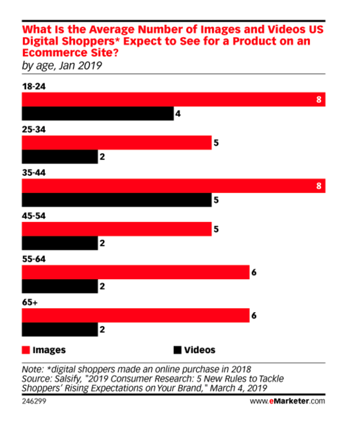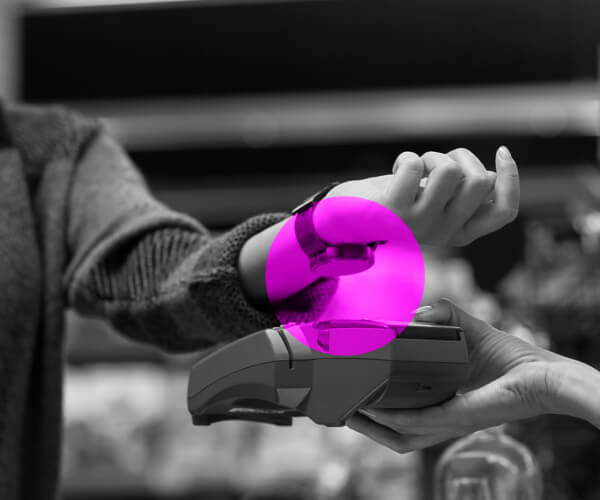Digital Retail Presents Real Challenges that Behaviorally Can Help You Overcome!
The retail world is decidedly digital and our clients have shared what a challenge it is to manage product data content at e-commerce retailers to ensure that it is compliant, effective, and helps to drive sales. We hear you! And we have chronicled your challenges in our e-book that addresses Ten Pain Points in E-commerce to Overcome.
Challenge #6 is: The real estate can be so damn small
Thumbnails on the digital shelf are thumb size. How can all images deliver brand benefits and remove barriers for shopper choice?
In previous posts, we talked about the highly complex, shifting landscapes in which e-commerce marketers have a lot to keep track of that are different depending on the specific e-tailer! We also noted the extreme importance of images on the product detail pages that feed the digital shelf on e-commerce sites in order to convert browsers to buyers. And we noted that in most platforms there are few if any guidelines on how to ensure that product images are effective, rather admonitions that they be compliant and meet the somewhat ambiguous recommendation that they be “compelling”.
OK, so what are the KPIs or metrics an e-commerce team might employ to manage product images to their advantage given these criteria?
One big challenge is the function of the sizes of the images.
The digital shelf does offer a number of opportunities for multiple images to depict the product SKU feature on the PDP. And it turns out that consumers need more than one image to make a buying decision.
According to an eMarketer study in 2019, the average number of images a consumer expects to see on an e-commerce page is six.

The e-commerce experience management software company, Salsify , in a 2018 study, reported that the average number of images consumers want to see in order to move from consideration to purchase is at least three:

Let’s start with the function these images serve:
There are main images, mobile ready hero images, detail shots, pack shots, “what’s in the box shots”, shots that convey the product in scale, and even the product in use. Images can be used to communicate features and benefits, trust symbols, lifestyles the product supports, and images of instructions for use that might otherwise be conveyed in text. And their impact differ category to category (think dry cat food versus mascara!).
AND while most consumers will expect to see three to six images, many e-tailers, depending on the category, MAY limit you to ten.
But which ten? And how will you know they are effective? Especially when increasingly visits to the digital shelf are enabled on mobile devices where the size of the image may be measured in pixels but is rendered at the size of thumbs! How do you know when an image isn’t working and how and what to fix?
The Behavioral Lens at Very Small Scale
Revisiting the behavioral principles that underpin all our shopper marketing insights, Behaviorally believes that e-commerce marketers must strive to do two things at the most visceral level of consumer decision making: communicate benefits and eliminate barriers to choice.
We didn’t invent these behavioral principles – they are the product of extensive research by two widely regarded academics and authors, BJ Fogg and Roger Dooley.
Fogg has published extensively on the efficacy of conveying motivations and benefits to make things easy to choose. Dooley is renowned for his work in the significance of friction in customer experience as a barrier to choice and loyalty.
What the PDP product image conveys, how it is seen at various sizes, and how effectively it can convey benefits and eliminate barriers in the instinctive “system 1” moment of choice must be measured against a validated set of metrics if a marketer is to know what and how to fix images that don’t measure up.
What Behaviorally does for digital commerce is to apply these principles to the metrics and KPIs for product image success as choice factors in physical and digital shopper settings. We are able to leverage our vast and growing database of shopper marketing insights, the largest in the industry, through the use of vision recognition AI and machine learning to predict image effectiveness.
There is no more important a behavioral metric than effective imagery that drives sales in the shopper journey when the real estate for conveying benefits and barriers is so relatively small and the time spent on an e-commerce site from search to consideration to choice is so short.
In a fast moving world of digital commerce how can e-marketers seize the capability to most effectively identify, evaluate, and optimize deficient product images, even the thumbnails, to drive conversion and sales on the digital shelf?
The Solution? Flash.PDP™!
Behaviorally is the leading digital partner to help brands drive shopper growth. Knowing these challenges exist for our clients on e-commerce teams who want to win in digital retail, we developed a solution that leverages visual recognition AI, our extensive database of shopper marketing content, our unique behavioral framework, and decades of category expertise. Introducing Flash.PDP – an always-on alert system to identify and optimize product images on the PDP that will convert to sales and drive shopper growth. It addresses category and retailer specific metrics that provide easy, efficient ways to monitor and optimize images that will lead to increased sales.
To learn more, contact a Behaviorally digital retail expert today here.
